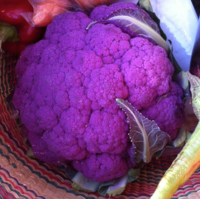
Photo from wikipedia
Abstract The biomass production of Rhodovulum sulfidophilum HPB.6 was optimized via response surface methodology (RSM), and the optimal medium components such as waste soybean extract, yeast extract, and Mg 2+… Click to show full abstract
Abstract The biomass production of Rhodovulum sulfidophilum HPB.6 was optimized via response surface methodology (RSM), and the optimal medium components such as waste soybean extract, yeast extract, and Mg 2+ were determined using “one-single-factor-at-one-time” approach. RSM used a three-factor and central composite rotatable design consisting of 21 experimental runs conducted to optimize the final medium components. The optimized conditions were as follows: 2.723 g/L waste soybean extract, 3 g/L yeast extract, and 22 mg/L Mg 2+ . Under optimized conditions of Rhodovulum sulfidophilum HPB.6, the biomass production was 4.665 ± 0.326 g/L, which was 5.7-folds higher than that under non-optimized conditions. Besides that, the total lipid production was 5.7 times higher corresponding to the increase in biomass productivity. In addition, there was a change in total fatty acid composition with omega 7 and omega 9 which increased from 55.4 to 62.21 and from 3.4 to 9.41, respectively, while omega 6 decreased from 9.79 to 4.54 and omega 3 could not be detected. This exploration of waste soybean under optimized conditions would be a significant impact for the higher biomass production from Rhodovulum sulfidophilum HPB.6. Graphic abstract
Journal Title: Clean Technologies and Environmental Policy
Year Published: 2020
Link to full text (if available)
Share on Social Media: Sign Up to like & get
recommendations!